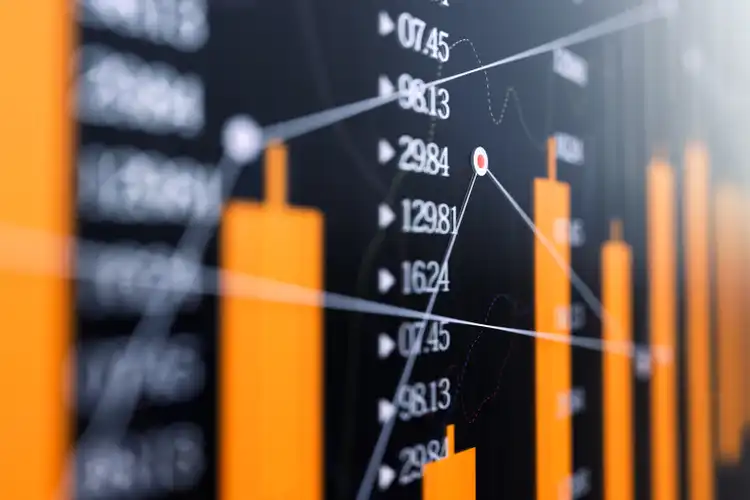- Unit 4308 Metroplaza, Tower II, 223 Hing Fong Street, Kwai Fong, Hong Kong
- [email protected]
Quarter 1, 2025 Market Commentary

Quarter 1, 2025 Market Commentary
Past performance is not indicative of future results. The information mentioned is for illustrative purposes and should not be considered a recommendation to buy or sell.
The first quarter of 2025 presented a complex landscape for global financial markets, characterized by significant volatility and divergent regional performances. Geopolitical tensions, trade disputes, and evolving monetary policies played pivotal roles in shaping market dynamics. While some regions demonstrated resilience and growth, others faced downturns influenced by policy shifts and external pressures.
US
U.S. equity markets experienced notable declines during this period. The S&P 500 fell by 4.6%, marking its most substantial quarterly drop in nearly three years. The Nasdaq Composite also declined by 10.42%. These downturns were largely attributed to trade issues and the unwinding of positions in popular artificial intelligence stocks, compounded by a weakening U.S. dollar. Companies such as Tesla, Broadcom, and NVIDIA saw their market capitalizations fall by 35.7%, 27.56%, and 19.59%, respectively. The imposition of tariffs by President Donald Trump, targeting aluminum, steel, automobiles, and all goods from China, raised fears of a U.S. recession. In response, Goldman Sachs reduced its earnings growth forecast for S&P 500 companies to 3%, down from 7%, citing the impact of tariffs, slower economic growth, and rising inflation.
Eurozone
European markets exhibited mixed results. The Pan-European Stoxx 600 index climbed 6% in January, and the HCOB Flash Eurozone Composite PMI Output Index rose to 50.2, signaling modest expansion after several months of contraction. Germany's private sector activity stabilized after six months of contraction, as services growth offset ongoing manufacturing weakness. Conversely, France's services sector saw its sharpest contraction since November 2020, though overall private sector activity showed slight improvement. The European Central Bank (ECB) implemented a 25 basis point rate cut in January, reflecting a more favorable inflation outlook and improvements in monetary policy transmission.
UK
The UK's FTSE 100 index surged 5% in January, buoyed by strong performances in the energy and financial sectors, including BP and HSBC. However, concerns over fiscal stability overshadowed this momentum, with UK government bond yields reaching their highest levels since 1998. The 10-year gilt yield stood at 4.921%. Inflation eased slightly in December 2024, with the Consumer Prices Index (CPI) rising 2.5% year-on-year, down from 2.6% in November. The Bank of England (BoE) left the benchmark bank rate steady at 4.75% during its December 2024 meeting, in line with expectations.
Japan
Japanese equities experienced a strong rally, supported by corporate governance reforms, a weaker yen, and sustained foreign investment. The Nikkei 225 reached multi-decade highs as major exporters benefited from favorable currency movements. The Bank of Japan (BoJ) maintained its key short-term interest rate at around 0.25% during its final meeting of the year, keeping it at the highest level since 2008 and meeting market consensus. The BoJ stated it needs more time to assess certain risks, particularly U.S. economic policies under Donald Trump and next year's wage outlook, while maintaining its assessment that Japan's economy is on track for a moderate recovery, despite some areas of weakness.
Asia (ex Japan)
Asian markets delivered varied performances. China's economy remained under pressure, with the yuan depreciating 1.8% against the U.S. dollar in January, hitting a four-month low following President Trump's announcement of a 10% tariff on Chinese imports. The Shanghai Composite Index gained 0.7% in January, supported by domestic policy measures to stabilize markets. Producer price deflation deepened to -2.3% year-on-year in December 2024, reflecting weak industrial output and excess capacity in key sectors. In response, Beijing announced additional fiscal stimulus, including expanded infrastructure investments and support for local governments.
Emerging Markets
Emerging markets faced challenges from a strong U.S. dollar and global interest rate policies, impacting capital flows and currency stability. Latin American equities showed resilience, particularly in Brazil and Mexico, where economic data remained positive. In contrast, geopolitical uncertainties in Eastern Europe and political instability in some African markets created headwinds. Commodity-exporting nations benefited from stable demand, though volatility in oil prices influenced investor sentiment.
Global Bonds
Global bond markets remained volatile as investors assessed central bank policies and inflation expectations. U.S. Treasury yields fluctuated amid speculation over the Federal Reserve's next moves, while European bond markets reflected the ECB's cautious approach. Emerging market debt faced pressure from higher yields in developed economies, though select high-yield bonds attracted investor interest. Corporate bonds remained attractive, particularly in sectors with strong earnings growth.
Commodities
Commodities experienced significant price movements. Gold futures soared 19.3%, achieving their best quarter since 1986, driven by trade wars and geopolitical uncertainties. U.S. copper futures surged 25.9%, benefiting from economic uncertainty and proposed copper tariffs. Conversely, oil prices remained relatively subdued, trading in a $10 range between $67 and $77 and ending the quarter at around $71.80, suggesting global demand is struggling to meet the current supply.
Digital Assets
Digital assets experienced significant volatility. Bitcoin and Ethereum dramatically dropped, with Bitcoin falling 11.8% and Ethereum plunging 45.6% during the first quarter. These declines were influenced by increased regulatory scrutiny and a shift in investor sentiment towards traditional safe-haven.

